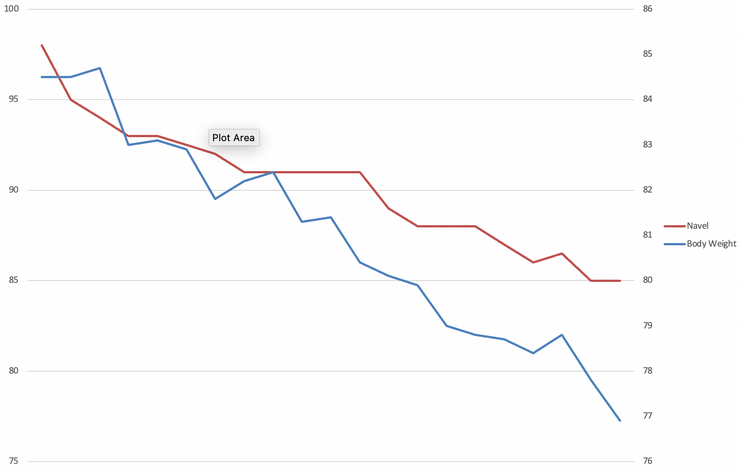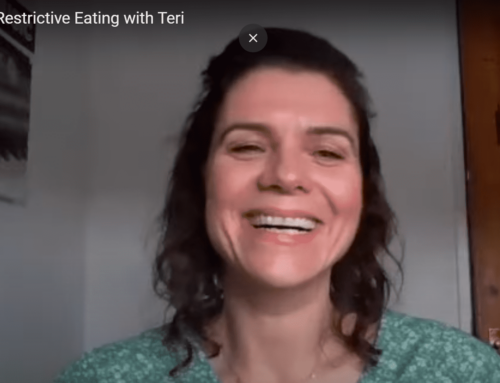Name:
Nick
Age:
38
Some Context from Me:
Nick is the classic ‘Weekend Warrior’ and sport is the hub of his social circle.
Each weekend, it’s not uncommon for him to be involved in a couple of games of hockey on a Saturday (he plays in goal and goalies are in high demand!) followed by a touch rugby tournament on a Sunday where he might play may be multiple games across the day.
He also enjoys training himself and has a home gym where he follows his own weight training plan (handy during a global pandemic), coupled with a bit of boxing on his punch bag.
He wants to enjoy his food, keep things simple and having a beer and a burger with the lads after the game is a non-negotiable. As it should be if you enjoy such things.
Before you hear from me, here’s what Nick had to say about the process:
Here’s what Nick was looking to achieve before we started working together, in his own words:
What was Your Health and fitness goal?
“Looking like Arnie did at the same age 😉. Or, more realistically, convert the sizable portion of fat I’m was carrying to muscle to improve my sporting performance”
What was getting in the way of that goal?
“Not appreciating the calorie content of several ‘snack’ foods, and a bit of additional motivation.”
What extra help was required?
“In general, a bit of oversight to keep me honest and develop the right habits as well as a bit of external perspective and reassurance to stop me second guessing myself.”
Nick’s Key Takeaways from Our Journey So Far
“I like a data driven approach and Tim taught me how to bring that data together from different sources (MyFitnessPal, fitness tracker, scales) what was relevant, what was subjective and what was downright misleading
I didn’t really have a clear, focussed goal or a real roadmap of getting there and was just using my own mash-up of diet and exercise until we settled on an objective target of 15% body fat.”
The whole process was one of collaborative education; Tim is always working with me to understand what I wanted, how to achieve it and why.
Finally, I really appreciate Tim being prepared to be blunt when necessary, then explaining and standing by his decision.
Overall, plenty of exercise, so why the increased waistline?
Food choices:
It doesn’t matter how many calories you burn if the calories within the food you eat exceeds them.
Busy Job:
Like a lot of people his age, Nick has a demanding job and often has to work long hours. Weekends are busy with sport too and this means that quite often food is ‘grab and go’, without much thought to how well it balanced his hunger across the day. Which leads onto…
Hunger:
Like a lot of people in recent times, Nick has reduced the amount of animal produce in his diet. Partly due to this, the amount of protein in his diet was low when we first started working together.
Regardless of how ‘sub-optimal’ a low protein diet may be for his sporting endeavours; it also isn’t really that filling. Increasing protein had an instant impact on snacking and there was no more devouring half a packet of biscuits between conference calls to keep him going. Nick likes to keep things simple (like all of my most successful clients) so the majority of the increase in protein came from the convenience of a protein shake in the morning, or alongside other lower protein meals
Knowledge:
Not having a solid plan for the amount of food to eat each day wasn’t helping. Nick had used MyFitnessPal in the past but hadn’t had much success. After I suggested simplifying his method of using the app it became far easier to manage and gave him huge amounts of flexibility around his food choices without being tied to the app 24-7
Objectivity:
Following a calorie target is all well and good but how do you know it’s the correct one to follow. What gets measured gets managed, so we used body and weight measurements to objectively track his progress and adjust the calories accordingly.
Given the huge variability in his calorie output at the weekends, I also gave him some guidance on how to handle this (this is not a trade secret but in the interest of keeping this succinct, it’s probably the subject of another article…)
Roadmap:
Stage 1 Fat Loss:
Nick wanted to lose some of the bodyfat so that was a sensible place to start. Especially as he wasn’t really playing a lot of competitive sport due to the Coronavirus pandemic meaning we didn’t have to worry too much about his performance suffering whilst in a calorie deficit
Note: in more ‘usual’ times my recommendation would have been to save fat loss for the off season, so performance is not impacted.
Initially we just focussed on the quality of each meal and monitored that through him sharing photos of his usual meals. This then allowed me to discuss improvements with him.
After increasing the amount of protein and vegetables in his diet to balance hunger, we discussed the pros and cons of calorie tracking. The biggest issue with calorie tracking for Nick in the past was that he was overcomplicating it. I gave a simpler strategy that he was happy to use most days to keep on track.
Dialling in the detail (at the right time) like this is where things really began to happen.
There is always a ‘big’ result in the first few weeks of any ‘diet’ as you typically conduct wholesale changes and cut out all the junk. But keeping that progress consistent and sustainable is the aim of the game:

Losing almost 8kg is definitely going to help increase that power to weight ratio!
Notice that there are always weekly peeks along the way but when you zoom out and look at ‘the bigger picture’ the progress is clear to see.
Is some of that weight loss muscle?
Not really because Nick was consuming an adequate amount of protein and maintaining his strength during his weight training. That 15cm he lost around his waist also suggests that it’s mostly fat 💪🏻
Stage 2 – Sports Performance & Muscle Gain
Nick asked me at the outset of the program “how lean should I aim to get”.
The simple answer is “as lean as you would like to be”.
There is no right and wrong point to start a muscle gaining phase, the whole concept of getting really lean so that you don’t gain excessive fat probably isn’t that well supported by scientific evidence and is a great way to keep spinning your wheels.
However, gaining muscle requires a surplus of calories and gaining muscle also causes you to gain some fat and you’re going to need to give gaining muscle a crack, consistently for 3-6 months so it can be helpful to start from a place where you don’t mind a little bit extra on the belly when you look in the mirror.
This is possibly the point where you’re expecting a shot of Nic’s abs. Sorry to disappoint but that was never his goal he wants to be strong, light and capable on the sports pitch. Still, I’m sure you’d agree that the progress picture below shows a real visible change:

To give us a point to aim at, Nick and I used a bodyfat estimation based on his waist measurement (no fancy scales or callipers – they are all equally inaccurate and a tape measure is CHEAP).
We decided that somewhere close to 15% body fat was acceptable to him and know to within the right range for athletes in his chosen sport.
Note:
Staying really lean does not help sports performance because you’ll probably need to be in a slight calorie deficit. Performance and muscle gain require a slight surplus so that your body can recover adequately, and your muscles can get stronger.
The key is that a SLIGHT surplus is needed. It’s not an all you can eat ice cream and pizza diet I’m afraid…
The key things for Nick in this next phase are going to be:
-
Increasing calories to an adequate level – primarily from carbohydrate to fuel performance
-
Monitoring training and recovery closely
-
Adjusting calories to ensure there is slow but consistent weight gain
-
Continuing to monitor his body measurements to highlight muscle gain and keep on top of any excessive fat gain
During this time, we need to bear in mind:
Muscle gain happens really slowly and takes AT LEAST 5-6 MONTHS to see any meaningful results.
This is the point where almost everyone starts second guessing themselves. They think they have done the ‘hard work’ losing the fat and start to panic as soon as the scales head north. This is where a coach really helps to objectify everything and keep you on track.
I’m looking forward to taking Nick through the journey, his effort is going to be more than worth the reward!
If you are a Weekend Warrior like Nick who wants to Eat to Perform without giving up beer and chocolate, then CLICK HERE to find out more…


